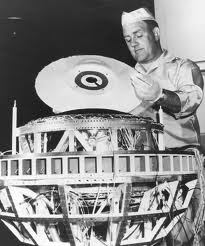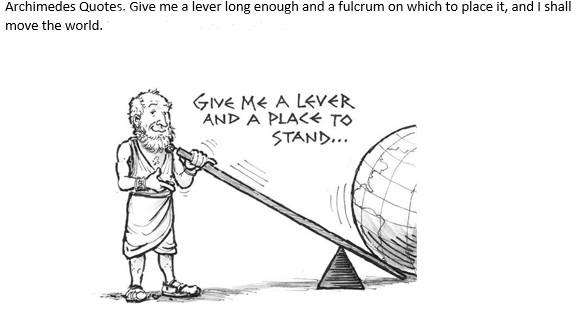Our World Gets Smaller – July 10, 1962: Telstar Launched
July 10, 1962: Telstar Launched
The world’s first international communications satellite, Telstar I, is launched into orbit ushering in a new era of communication.
The aluminum satellite was wimpy by modern standards. It used 14 watts of power – roughly one-seventh that of a modern laptop – generated by the 3,600 solar panels on its outer hull. As well, it could only carry 600 phone calls and one black-and-white TV channel, though not much more was really needed at the time.
The first two Telstar satellites were experimental and nearly identical. Telstar 1 was launched on top of a Thor-Delta rocket on July 10, 1962. It successfully relayed through space the first television pictures, telephone calls, fax images and provided the first live transatlantic television feed. Telstar 2 was launched May 7, 1963. Telstar 1 and 2, though no longer functional, are still in orbit.
Belonging to AT&T, the original Telstar was part of a multi-national agreement between AT&T (US), Bell Telephone Laboratories (US), NASA (US), GPO (UK) and the National PTT (France) to develop experimental satellite communications over the Atlantic Ocean. Bell Labs held a contract with NASA, reimbursing the agency three million pounds for each launch, independent of success.
The satellite was built by a team at Bell Telephone Laboratories, including John Robinson Pierce, who created the project; Rudy Kompfner, who invented the traveling wave tube transponder used in the satellite; and James M. Early, who designed its transistors and solar panels.
The satellite is roughly spherical, measures 34.5 inches (876.30 mm) in length, and weighs about 170 pounds (77 kg). Its dimensions were limited by what would fit on one of NASA’s Delta rockets. Telstar was spin-stabilized, and its outer surface was covered with solar cells to generate electrical power. The power produced was 14 watts (0.019 hp).
The original Telstar had one innovative transponder to relay data, which was a television channel or multiplexed telephone circuits. An omnidirectional array of small antenna elements around the satellite’s “equator” received 6 GHz microwave signals to be relayed.
The transponder converted the frequency to 4 GHz, amplified the signals in a traveling-wave tube, and retransmitted them omnidirectionally via the adjacent array of larger box-shaped cavities. The prominent helical antenna was for telecommands from a ground station.
Launched by NASA aboard a Delta rocket from Cape Canaveral on July 10, 1962, Telstar 1 was the first privately sponsored space launch. A medium-altitude satellite, Telstar was placed in an elliptical orbit completed once every 2 hours and 37 minutes.
Telstar 1 relayed its first, and non-public, television pictures—a flag outside Andover Earth Station—to Pleumeur-Bodou on July 11, 1962. Almost two weeks later, on July 23, at 3:00 p.m. EDT, it relayed the first publicly available live transatlantic television signal. The broadcast was made possible in Europe by Eurovision and in North America by NBC, CBS, ABC, and the CBC.
The first public broadcast featured CBS’s Walter Cronkite and NBC’s Chet Huntley in New York, and the BBC’s Richard Dimbleby in Brussels. The first pictures were the Statue of Liberty in New York and the Eiffel Tower in Paris. The first broadcast was to have been remarks by President John F. Kennedy, but the signal was acquired before the president was ready, so the lead-in time was filled with a short segment of a televised game between the Philadelphia Phillies and the Chicago Cubs at Wrigley Field.
The batter, Tony Taylor, was seen hitting a ball pitched by Cal Koonce to the right fielder George Altman. From there, the video switched first to Washington, DC; then to Cape Canaveral, Florida; to the Seattle World’s Fair; then to Quebec and finally to Stratford, Ontario.
The Washington segment included remarks by President Kennedy, talking about the price of the American dollar, which was causing concern in Europe.
During that evening, Telstar 1 also relayed the first telephone call to be transmitted through space, and it successfully transmitted faxes, data, and both live and taped television, including the first live transmission of television across an ocean from Andover, Maine, US to Goonhilly Downs, England and Pleumeur-Bodou, France. In August 1962, Telstar 1 became the first satellite used to synchronize time between two continents, bringing the United Kingdom and the United States to within 1 microsecond of each other (previous efforts were only accurate to 2,000 microseconds).
1962 Newsreel on Telstar
The Tornados play Their Hit, “Telstar“















